Aspiring Developers Could Learn From S.T.A.L.K.E.R.

---------------------------------------------------INTRODUCTION
When someone gives a list of reasons of what certain features games are missing, I usually think to myself "do these people even know how those features are made/implemented?". The short answer is an obvious no. No, the majority of players have no clue how those assets or "graphics" are created. Nor do they know how long and arduous the process of programming them might be. But then I remember that I was the exact same way during my younger years.
Now I am about to do the same thing...but the small difference between me and a normal gamer, is that I have a degree in Computer Science and worked on small personal video game projects myself. No, none of my games were successful or even released, but I did learn a few things along the way (giving me flimsy justification). So I though I might write a short article on what the developers of STALKER did so long ago (2007-2009 is long ago for the purpose of this article), and what today's aspiring developers could take note of. For the most part I will use Call of Pripyat and Shadow of Chernobyl as examples as they are the most stable versions.
Even though this article will give much credit to the series, do know that not everything in these games were perfect by any means and were considerably flawed. They were very rough diamonds from the start.
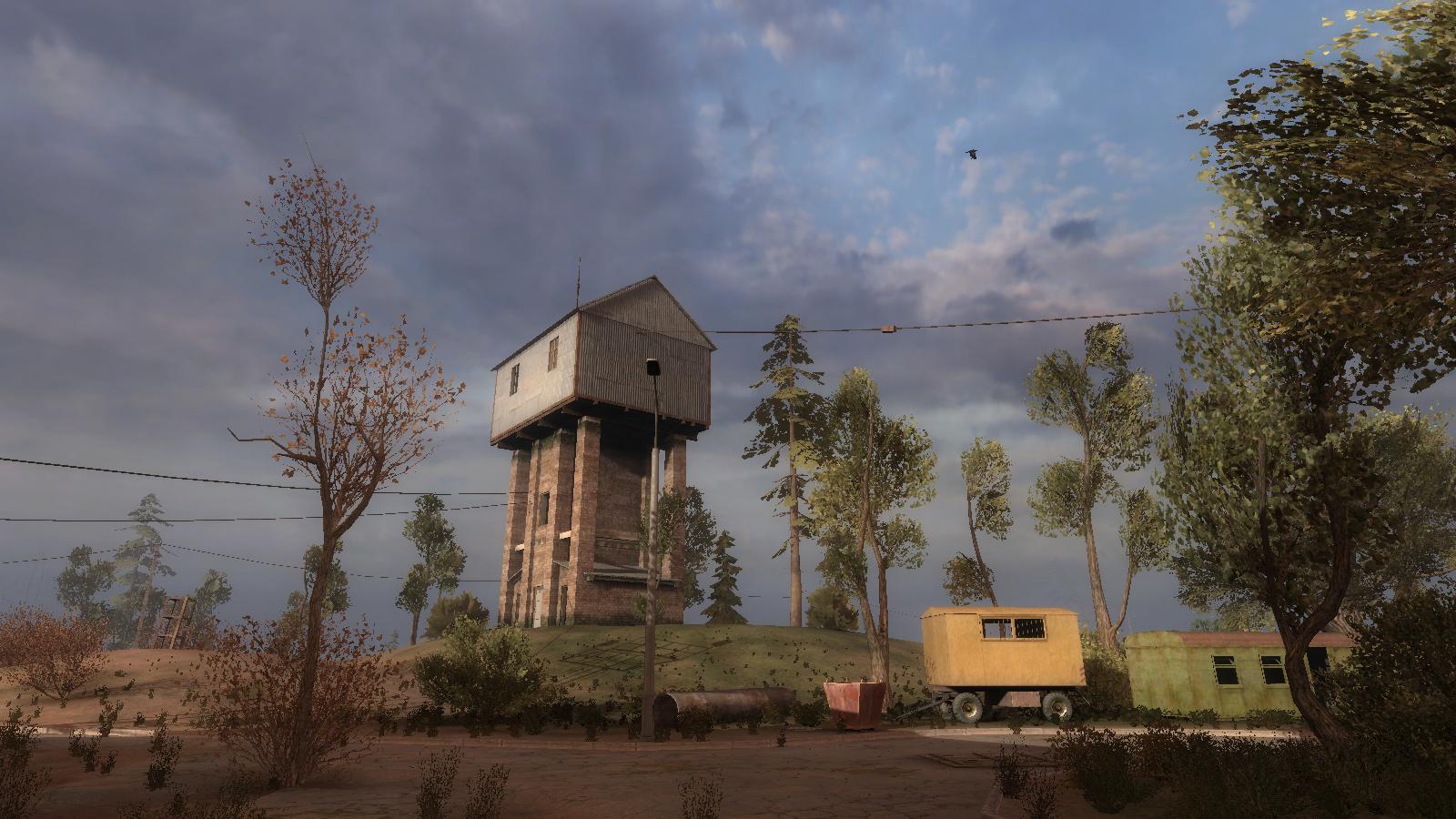
Yanov Station, Call of Pripyat
---------------------------------------------------BRIEF HISTORY
The STALKER series was developed by Ukrainian developer GSC Game World, with the exception of STALKER: Mobile. The first game, Shadow of Chernobyl (SOC) was first announced in 2001, and was to be released in 2003 but suffered many delays. It was finally released in March 2007 (got it for my birthday). The second game, Clear Sky (CS) was released August 2008 (did not get it for my birthday) as a prequel to SOC. The last game, Call of Pripyat (COP) was released in October 2009 (did also not get for my birthday) in the CIS regions. With every installment new features and "tech" were added to the game engine that GSC called X-ray. The games would go on to be highly revered cult classics worldwide. All games took heavy inspiration from Boris and Arkady Strugatsky's Roadside Picnic novella, as well as Andrei Tarkovksy's film, Stalker (1979).
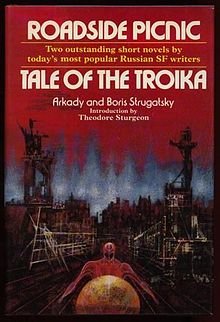
Written by Boris and Arkady Strugatsky
1972 (Russian) and 1977 (English)
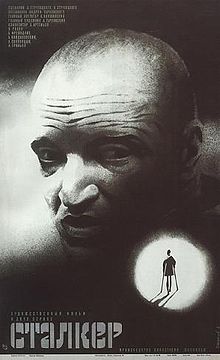
Stalker (1979)
Directed by Andrei Tarkovsky
---------------------------------------------------WHY ARE THESE GAMES PROFOUND?
They were one of the first games to successfully blend multiple genres into one coherent experience, being a first-person shooter/RPG/Sandbox/Horror/Survival game. All of them had an interesting story, narrative and world for the player to explore. They boasted a combination features rarely present in other games at the time, and are unique games even to this day. The following are the different aspects and features presented in these games that made them stand out during 2007 to 2009:
---------------------------------------------------IMPRESSIVE PHOTOREALISM
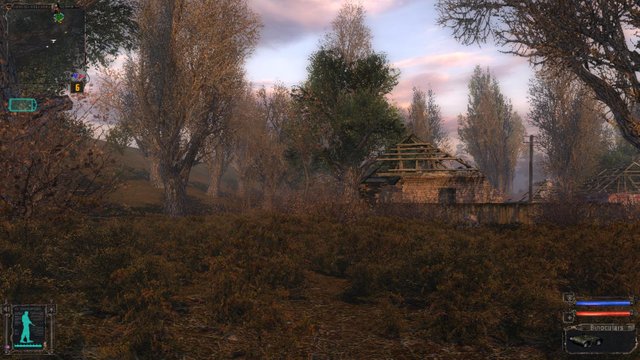
The method used by the game's artists is called photorealism. It is a style of art characterized by highly detailed depictions of real life, resembling a photograph. While you might think that most artists would ideally use complete photos in their textures and replicate objects exactly for in-game assets, you'd be surprised to find that it's usually only a small part of the overall composition, as artists usually take more creative liberty with their work. GSC's artists have mostly stayed true to their references to produce life-like textures and objects, almost as much as Finland's Remedy.
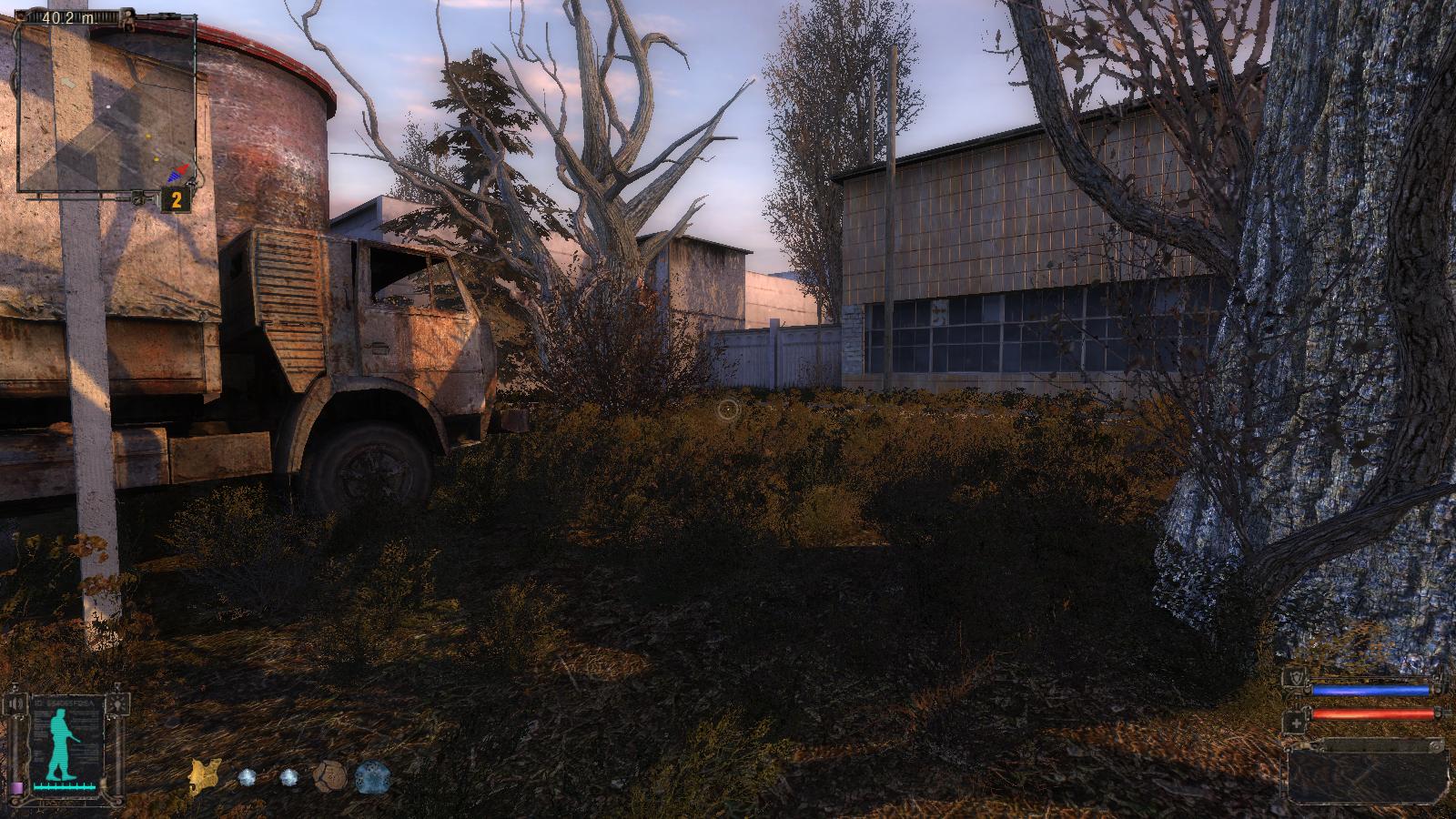
GSC made great effort to incorporate the look and feel of the Kiev landscape with its varied flora and fauna, buildings, climate and overall atmosphere. Seeing as the game's setting was literally their backyard, it gave them the edge over most developers. The opportunity to create a true-to-life experience grounded in both reality and fiction, just by doing simple replication of things they knew very well. While the STALKER games may be considered dated visually, their 3D environments and meshes had relatively high polycounts/vertices compared to other games from the same era.
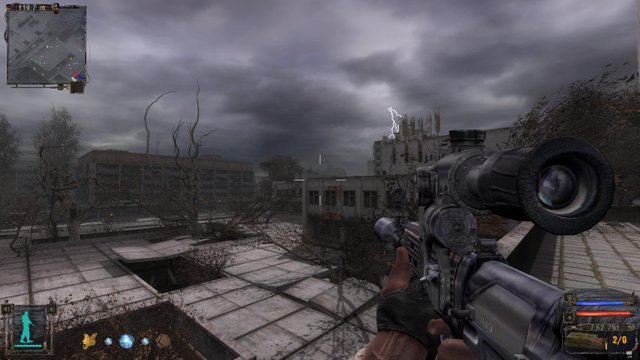
Today photorealism is much more common place and developers mimick reality way better than in 2007, so if you want your game to look competent, try to make things look real. That may sound like obvious and dumb advice, but really think about how many games actually look close to reality. Not too many eh? Its a very simple concept, but is rarely adhered to. Have you maybe ever asked yourself why games like Red Dead Redemption still looks good in comparison to newer graphical behemoths like Uncharted 4? Good photorealism practice lengthens a game's lifespan and adds to replayability, helping players to come back to it. Heck, people still think Half-Life 2 looks good because of the way it used photorealism.
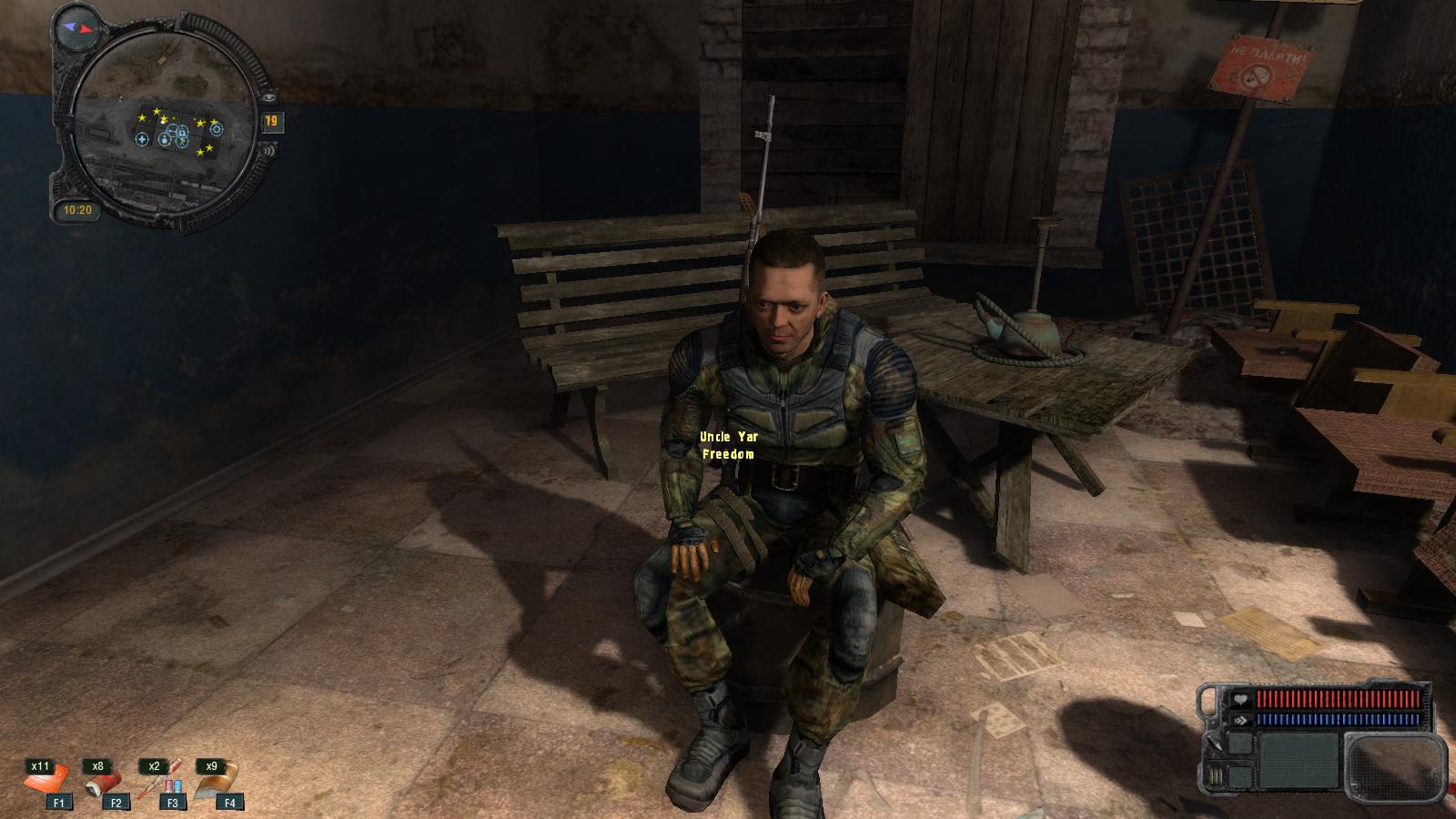
Steve Buscemi
---------------------------------------------------CREATIVE ARTIFICIAL INTELLIGENCE
During development GSC created an artificial intelligence engine they called ALife, which they eventually implemented into all three games. This system/engine was the backbone of the game's overall gameplay and AI behavior. ALife worked by assigning one of two states/behavior sets to entities (NPC's and mutants): offline and online.
In offline, entities had no physical presence (meaning no character models, animations or sound) and only built paths on the global navigation graph, meaning that their movement was visible on the player map, but not physically visible to the player. In online, entities had a physical presence (visible character models with animations and sound), could actively manage their inventory and build detailed smooth paths, with global navigation paths visible on the player map.
PDA map in SOC, showing player and NPC movement/location
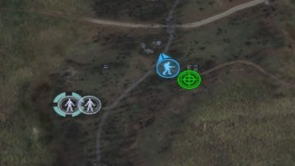
The offline state gets implemented on entities active on another area/level of the game world, while the online state gets implemented on entities within the same area/level the player inhabits, only being applied to entities within a 150 meter radius of the player's position. This meant that the game could swap between the two states as necessary, creating a seamless and active game world even if the player couldn't see any of it.
In a nutshell ALife enabled NPC's to belong to specific factions, work and travel together, have their own location waypoints (where they travel to) and react to the environment. For the mutants/wildlife, it enabled them to inhabit certain areas, migrate and hunt/attack as packs. All this with or without the player's presence. In fact the player is considered nothing special, being reckoned as another entity, a small cog in the workings of the greater machine.
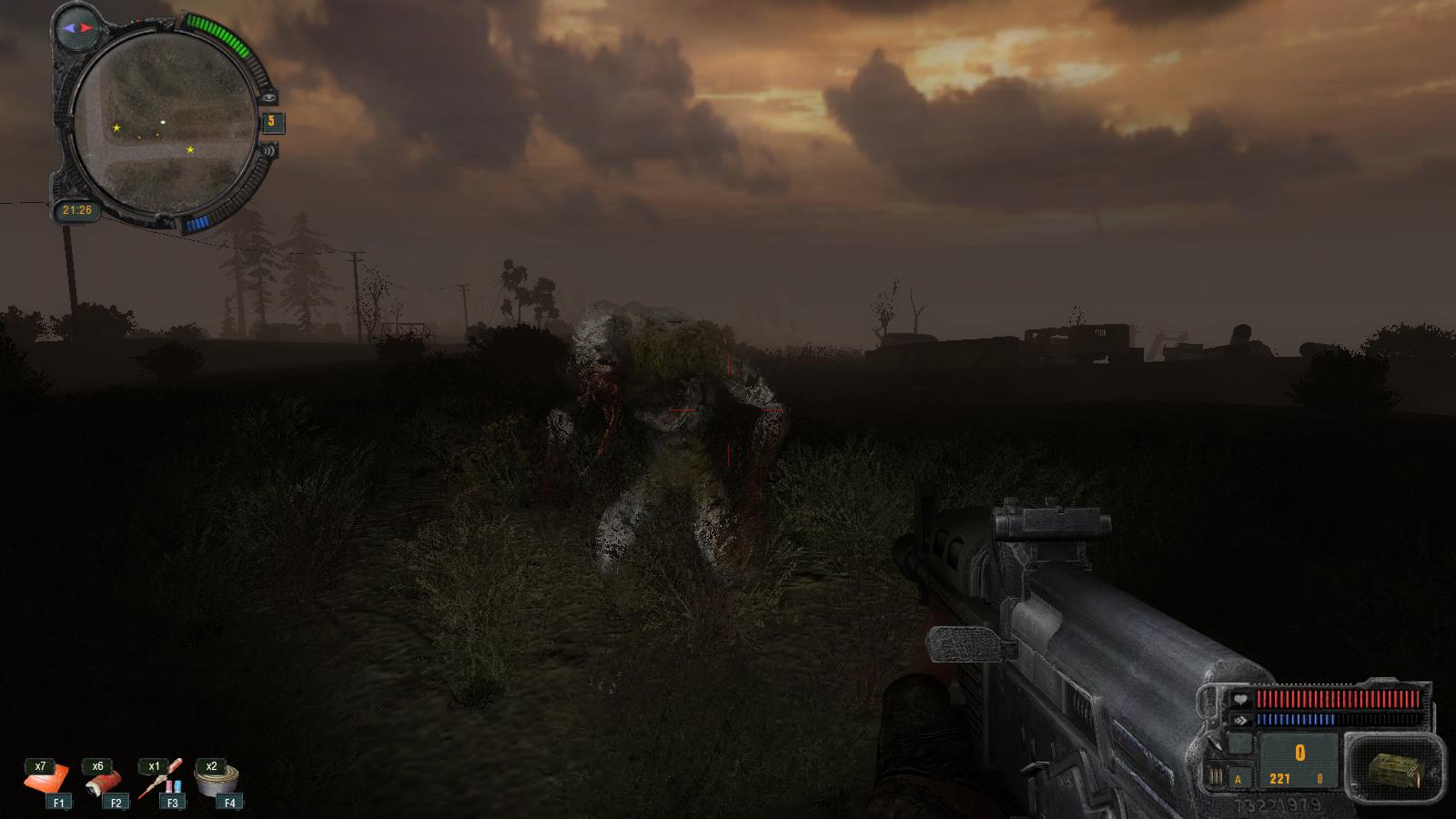
Friendly mutant that can cloak like the Predator
While this was implemented in SOC, the two later installments would feature a new and improved ALife engine, enabling GSC to assign new tasks and behaviors to entities in the game world. Some of these included in COP and to a lesser extent CS, was the ability for NPC's to have personal quests/missions and alliances with the player. NPC's would go about their own routine, traveling and doing jobs like artifact hunting. They would move as a team with other NPC's to various sites on the map, completing whatever task that was assigned to them the moment the game started.
NPC's belonging to Duty, one of the series' many factions
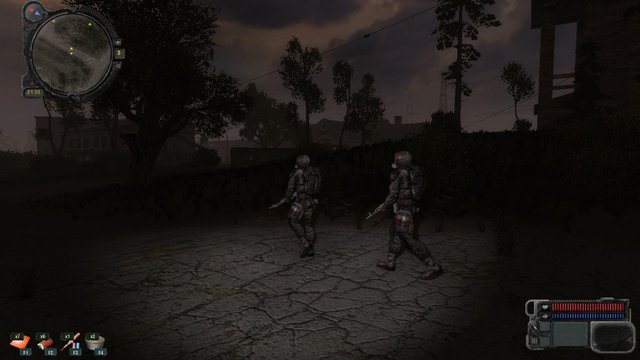
In most of today's games the player is treated as the cream of the crop, lest they start feeling unimportant and lose interest. The game industry is obsessed with pleasing the player. In STALKER the player is thrown in the deep end, having to figure everything out for themselves. Whether this was a good or bad approach, it undeniably contributed to the series' reputation of unforgiving and tough gameplay. This AI system is somewhat similar to other sandbox games, but remember that in STALKER the game world is segmented into different areas with open interiors, whereas games like the Elder Scrolls series have one large and open area, with much smaller segmented levels for the interiors.
Now I'm not saying that every game should have top-notch AI that will threaten F.E.A.R.'s reign, but assess your gameplay objectives carefully. Start with simple AI and then build upon it incrementally. The more complex your AI, the more the possibility of it becoming clunky/bad and failure-prone, like Fallout 4 or Half-Life 2 (oh snap!).
---------------------------------------------------REALISTIC BALLISTICS
That title may sound funny if you say it fast, but the point is that STALKER has always featured an in-depth and realistic weapon ballistics system. While the word "system" may be too generous, the games do have specific rules when it comes to the damage and effect of every weapon. Bullets respond in a realistic fashion, explosions throw shrapnel and shock waves inside their effective range, and melee attacks cause rupture and bleeding.
When the player shoots with their firearm, bullets always appear from the tip of the barrel and spawns at a different point depending on the specific firearm used, not like in some older and newer games where bullets always spawn from the player character's chest (cough Battlefield 4). Bullets are physical objects affected by gravity and are propelled with a set amount of force, causing them to travel at an arc, and do not fly in a straight line like in most games. Depending on the impact surface angle and slope, the bullet will either be destroyed or bounce/ricochet off in the correct manner, while still maintaining its original force and gravity limitations. Every weapon has a different variable for bullet force and weight. For example, a rifle bullet travels faster and further than a bullet from a pistol.
Bullets also have different penetrative properties depending on their type. A normal bullet (such as a hollow point) will not penetrate medium thick metal or wood and is less effective against armored targets, being better suited to non-armored and open targets. Armor-piercing (full metal jacket) bullets are capable of penetrating medium thick metal or wood and is very effective against armored targets, being somewhat less effective against non-armored targets. The game allows the player to switch between ammo types if they are placed inside the inventory. For example, if a target is in cover behind a small tree or metal door, the armor-piercing bullets will penetrate and hit the target behind it, depending on the thickness of the cover.
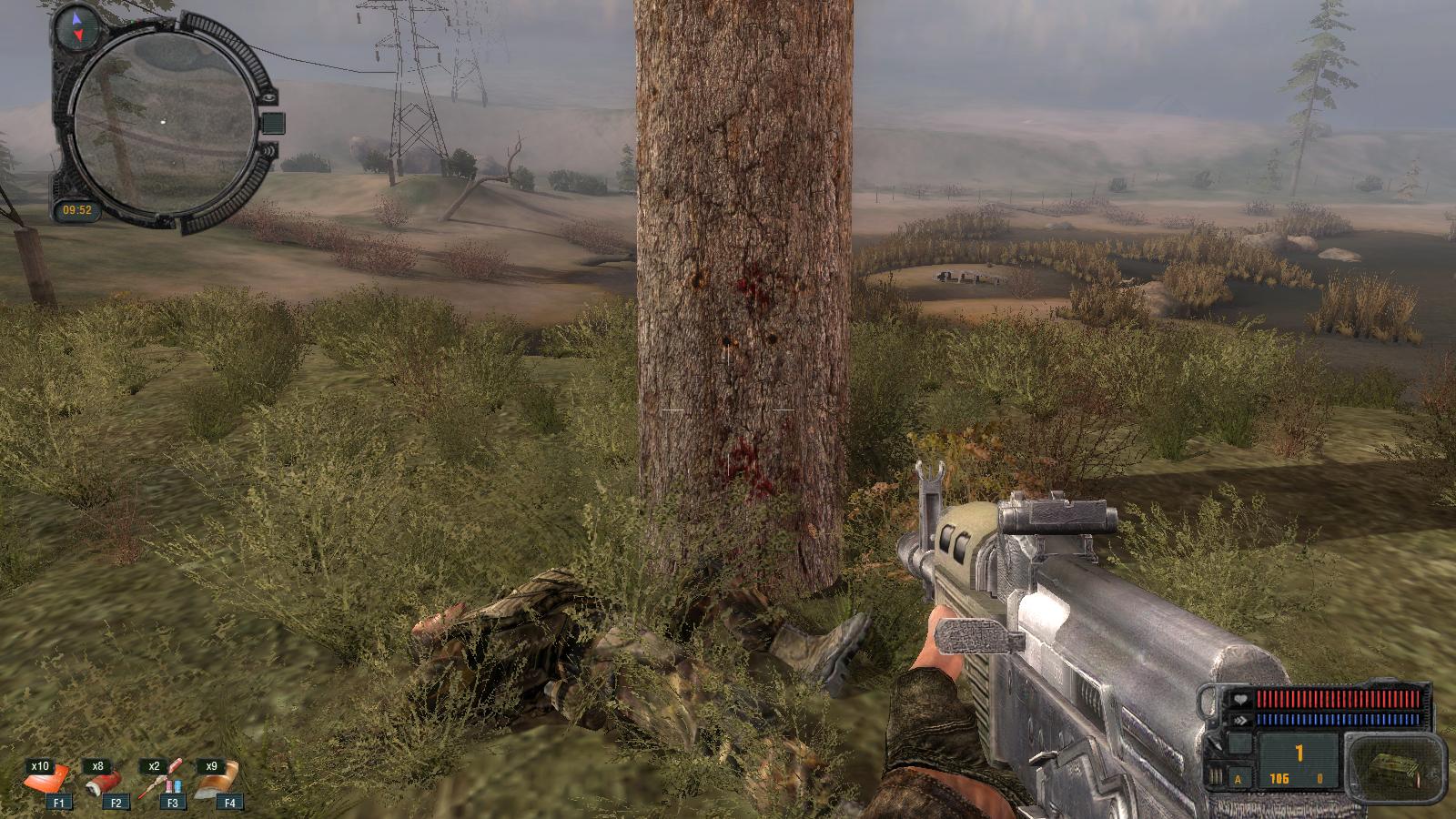
AP Bullets can whiz through this tree hitting anything behind it
While these concepts are nothing new or revolutionary today, they were rarely incorporated in AAA games. They were somewhat untapped back then. Other older examples are Splinter Cell: Chaos Theory, the Rainbow Six series, Hitman series, ARMA series, and maybe even Perfect Dark. Although these and other known games used some or a mixture of these features, they were limited representations of realistic ballistics. STALKER was one of the first to incorporate most, if not all of them, being applied to both the player and AI. Popular examples like Call of Duty, Battlefield and Metal Gear Solid incorporated these features later on.
---------------------------------------------------BELIEVABLE WEATHER EFFECTS
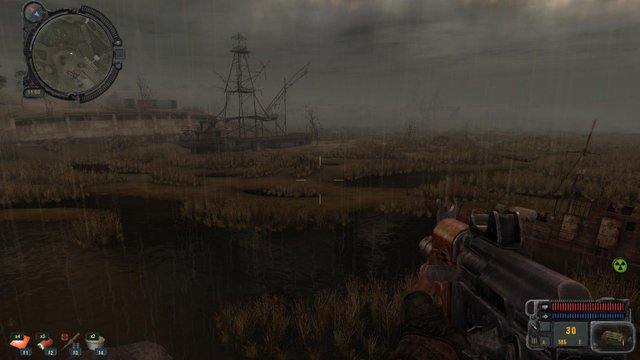
The series features dynamically changing weather that alters the gameplay in different ways. Thunderstorms cause light that can give away the players position and trembling that deafens smaller sounds around them, with fog and rain limiting the player's vision. Fake/simulated wind blows leaves around (localized particles) and trees and foliage make rustling sounds (part of ambient sounds). The skybox changes according to the corresponding weather over time, and a plane with a clouds texture on it scrolls above the player.
The skybox or skydome (not sure which method was used) undergoes a transition of texture depending on the weather and time of day. Imagine a slider incrementally increasing/decreasing in value, with the value being the transparency on a sky texture. As the slider moves up/down, the texture starts to appear/disappear revealing an alternative texture that was above/underneath. Whether this process is as described or different, the result is usually the same. It doesn't use an animated skydome like in Red Dead Redemption or Far Cry.
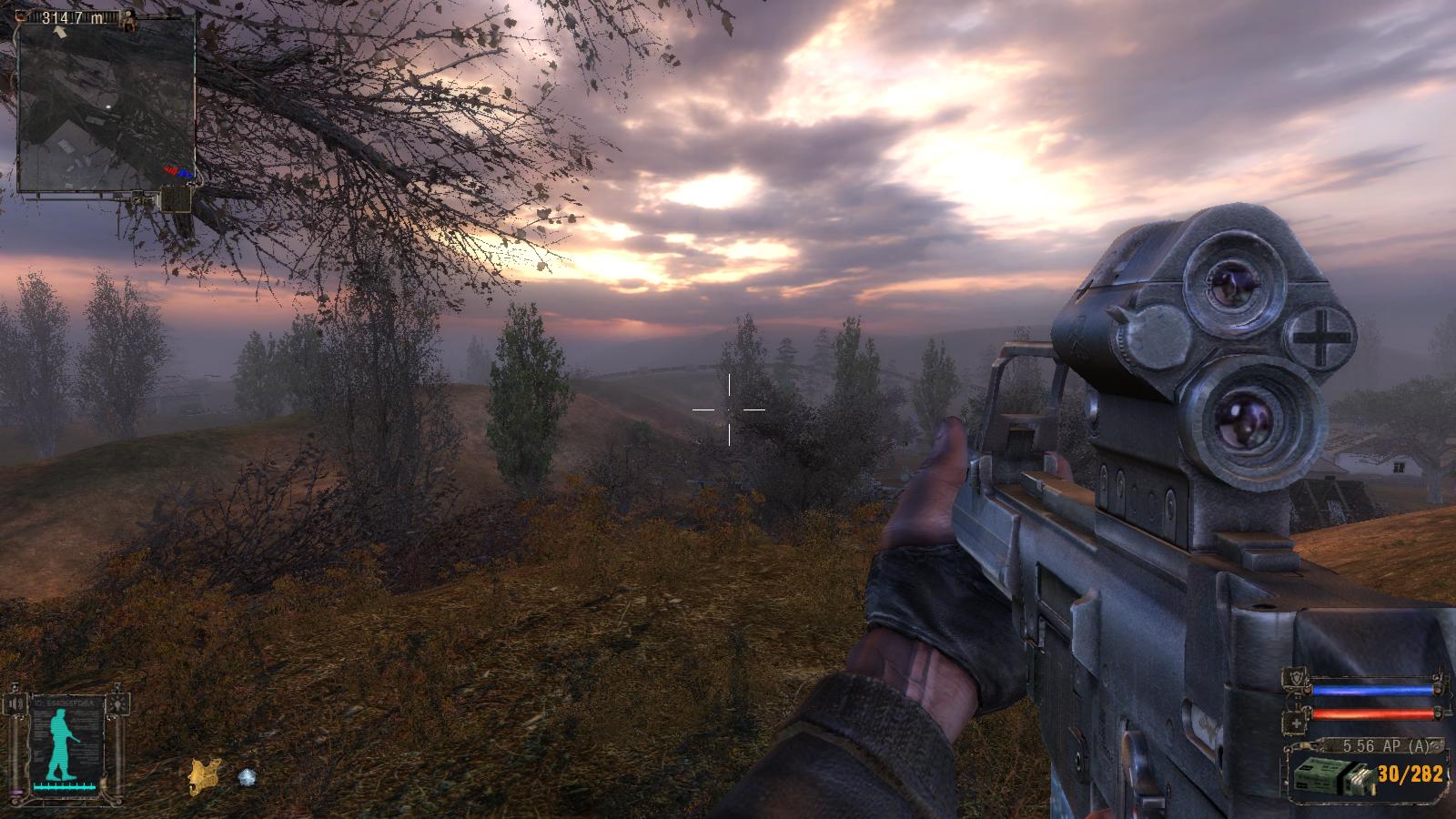
To be honest, the methods used in these games are very dated and quaint looking, but gets a pass for implementing it so well in its time. No, they didn't use cool stuff like volumetric clouds similar to Crysis, but decided to harbor simple techniques for performance and functionality. That's how your game should feature dynamic weather, by implementing simple assets in clever ways.
In its simplest form, the weather in STALKER (and most games) follows the player and is attached to their pivot point. So basically when any weather effects appear in-game, its always exclusively around the player extending a certain radius. When the wind is blowing the leafy particles around you, it's only around you. When it's raining, it's only raining on you. It's for both performance and practicality. Hope that doesn't spoil anyone's perception of games, but that's simply how it works.

Now there is nothing wrong with that in practice, when handled well. It's a little too obvious in some games though, so when creating your weather effects do remember to extend the radius of the particles so that it is near impossible to spot the edge. The technique used in Gears of War 1 was to have scrolling textures on planes, packed in blocks to simulate rain coming down all around the environment. This worked great and diminished the need for particle effects...until the player looked straight up and saw the empty squares between the planes. In the end particles are still the way to go, especially when attached to the player. You could opt to use a large scale particle radius, but know the bigger it gets the more performance hungry it will be.
---------------------------------------------------LIGHTING IS THE SECRET
In order to fully represent a realistic environment, a game needs to adequately use light to present believable and realistic looking visuals. Lighting really is everything. A game can have the highest resolution textures and the best detailed objects and environment, but without good lighting it will look like a game from the early 2000's, like Unreal Engine 2, id Tech 3 and early Source games. Competent lighting can make an arguably bland looking game pleasing to the eye, like F.E.A.R. for example. Here is a quick video showing an updated version of lighting for Half-Life 2, which is nothing spectacular but it brings across the point well enough:
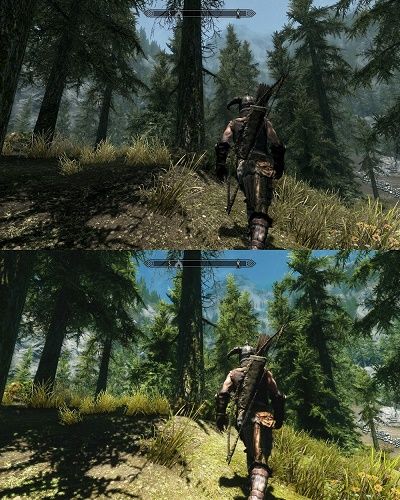
Vanilla Skyrim vs ENB modded Skyrim with better lighting
Now did STALKER hold up in terms of lighting? In my humble opinion it did, especially with CS and COP. Depending on the mood and general atmosphere of your game, it will dictate the type of color lighting used. For instance Splinter Cell required generally dark lighting, Just Cause needed very vibrant and brightly colored lighting, Condemned needed washed out looking shadows and lighting, and STALKER needed grayish and bland lighting to simulate the typical Eastern Bloc overcast weather and mood, with the occasional vibrant color to simulate the limited sunshine. Bloom, Shadows, Ambient Occlusion and HDR can only get you so far, which was especially true for Fallout 3 that ended up looking pretty bad as it didn't implement compelling light colors.
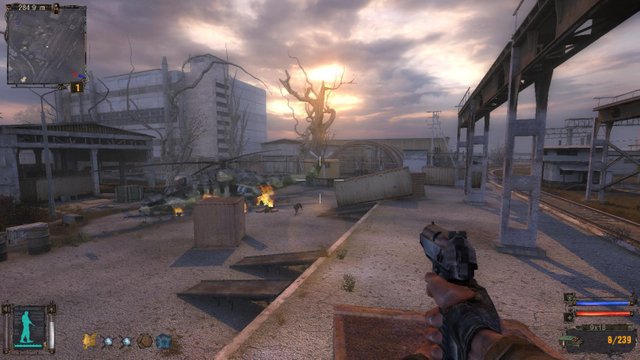
SOC still looks fine in 2018
For more realistic depictions, modern games like GTA V and Metal Gear Solid V have used some of the most convincing lighting colors used in gaming history, and many games are starting to follow the same standard. The overall gaming industry has kind of figured out good texturing years ago (except for Bethesda) and have started to see the importance of lighting and how it affects the overall look of the visuals, where it compliments the surrounding environment and object textures.
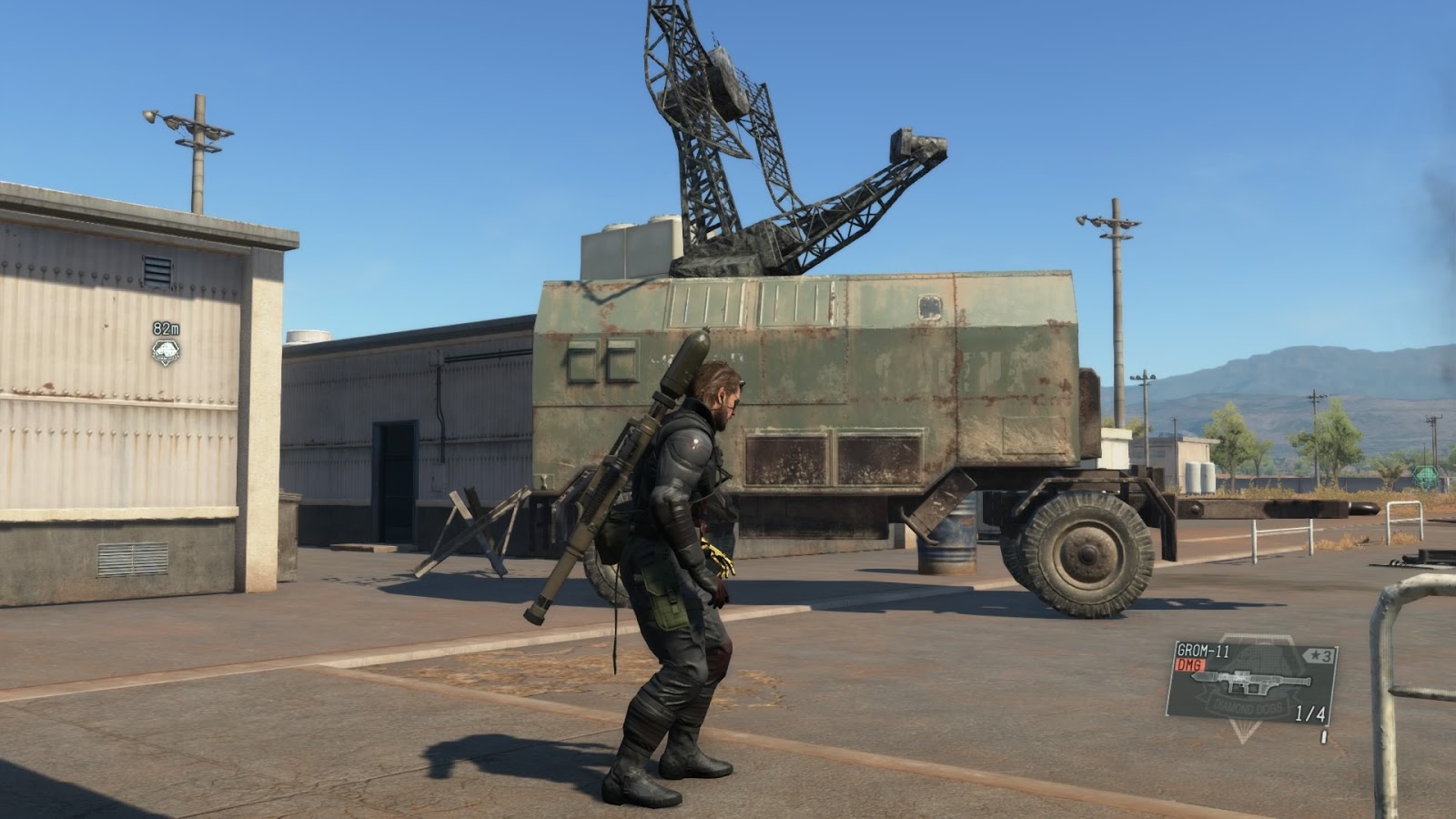
MGSV looked good even on Xbox 360 and PS3
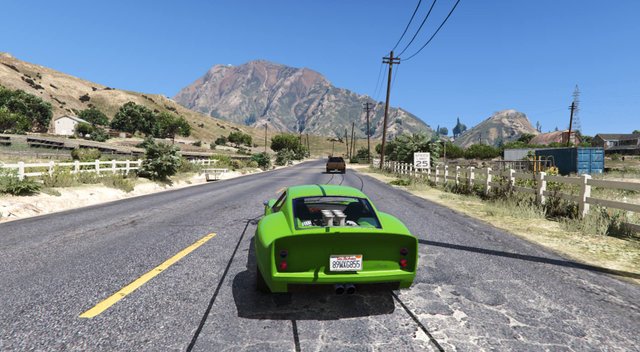
GTA V with the ICEnhancer mod
STALKER used the perfect lighting solution for what it was trying to be and largely succeeded in becoming one of the most atmospheric FPS experiences ever created.
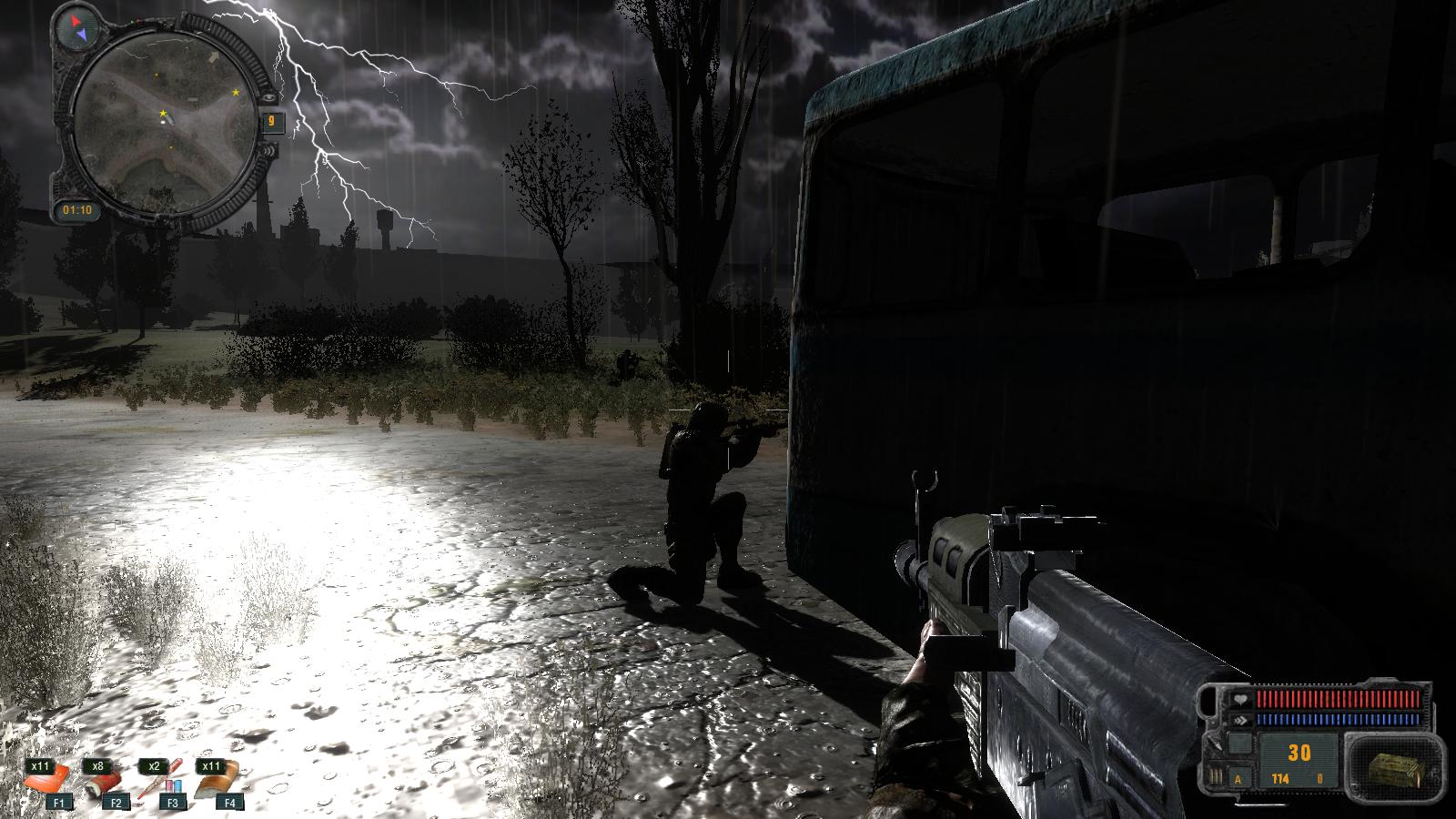
Perfect use of light and shadows to simulate a thunderstorm
---------------------------------------------------RESPONSIBLE USE OF PHYSICS
It has been proven time and again that real time physics simulation makes a game world feel alive, as it enables players to interact with their virtual surroundings thereby increasing the immersion. That being said, physics are a double-edged sword, possessing the ability to ruin a game's atmosphere and mood. Developers need to assess whether or not physics simulation (especially ragdolls) fits the vision for their game, whether or not it's beneficial to sacrifice interaction for sound atmosphere. A good example of where physics have proven very unhelpful is the Horror genre. The world of Silent Hill 2 would probably not be as threatening for players if every dying monster collapsed into a floppy ragdoll. Let's be honest, physics are hilarious in nature, just look to YouTube for proof.
Games like Max Payne 2 and Half-Life 2 are often considered more funny than serious, seeing as both used the Havok physics engine in the early 2000's, which often made characters do impromptu flips and cartwheels upon death. Hitman, Deus Ex, LA Noire, Assassin's Creed, Elder Scrolls, Fallout, Bioshock, Dying Light, Splinter Cell and Battlefield are just some of the games that made me and my friends consistently laugh over the years for their over/improper use of physics. That's exactly why developers need to decide whether or not to use physics simulation, or rather plan to implement it in a smarter way. If you want people to take your game seriously use it responsibly. For example, the fact that players could move and flip around the Emperor in Oblivion just removed any serious impact of his death in the story.
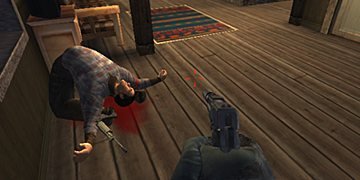
Rainbow Six - Raven Shield
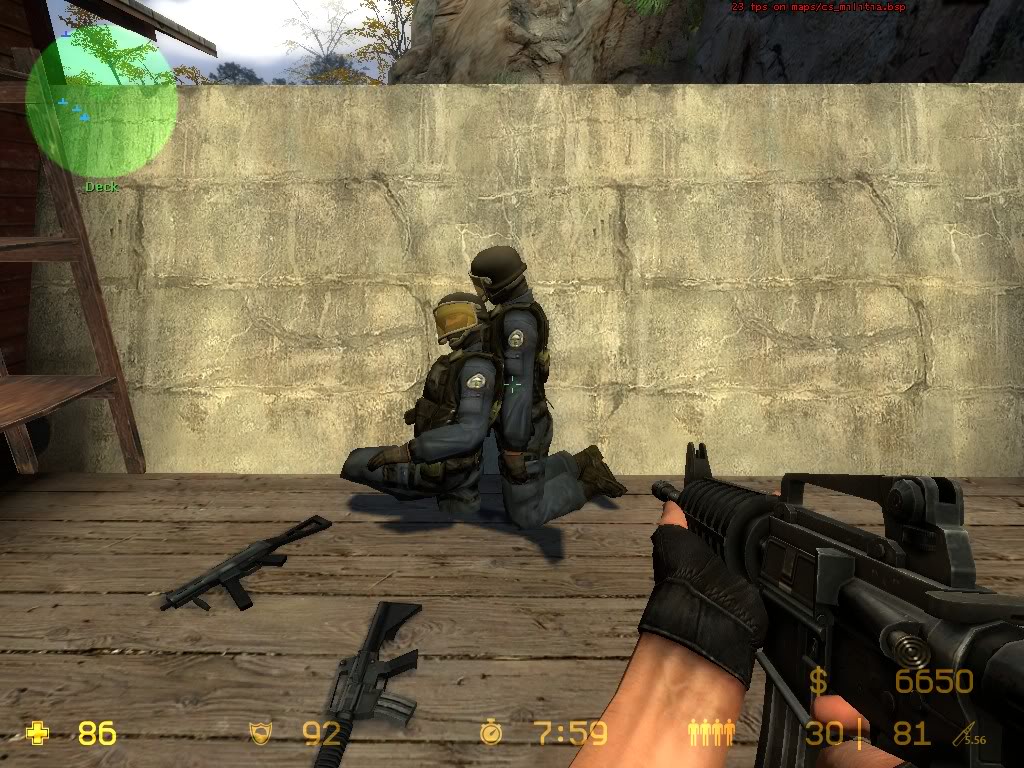
Counter-Strike Source

The Elder Scrolls - Skyrim
STALKER used a heavily modified version of the ODE physics engine which featured Ragdoll physics and destructible objects. In STALKER, ragdoll enabled characters are heavier in weight thereby limiting the chances of characters flailing about upon death, and drop to the ground relatively fast. The more the joints and bones of the skeleton weigh, the less likely they are to move around in a comical fashion when the player or environment interacts with them. This mostly blurs the line between comical and realistic, the line being whether or not physics make a game more profound and effective, or whether it turns it into a YouTube fail video.
---------------------------------------------------DISTINCTIVE SOUND
Lastly sound. I cannot emphasize enough how much of an impact sound plays in games, and this was especially true for STALKER. Region accurate character voices, distinct mutant growls, anomaly beeps, radiation crackling, foliage rustling, natural weather recordings and ambient soundscapes made up half of what made the game so immersive. Were it not for GSC's effective use of sound the games would have been debilitated greatly, reducing the overall atmosphere and direction. Music itself sets the stage the moment the player first runs STALKER, with a haunting soundtrack that fits the greater narrative and environment. Developers need to fully understand their main vision for the game they are making, and need to cater the correct audio to enhance that vision. Would Far Cry 3 - Blood Dragon be the same without the synth soundtrack and futuristic 80's sound effects? Hell no.
---------------------------------------------------FINAL THOUGHTS
This short article mainly touched on some of the technical aspects of STALKER and really doesn't serve as a comprehensive guide to creating timeless video games, but I do hope that these simple observations helps someone one day, should anyone miraculously read it in the first place. Some of the GSC Game World guys have gotten back together again so hopefully they can captivate the gaming world once again soon, and show everyone how it's done. Here are some final screenshots from SOC and COP:
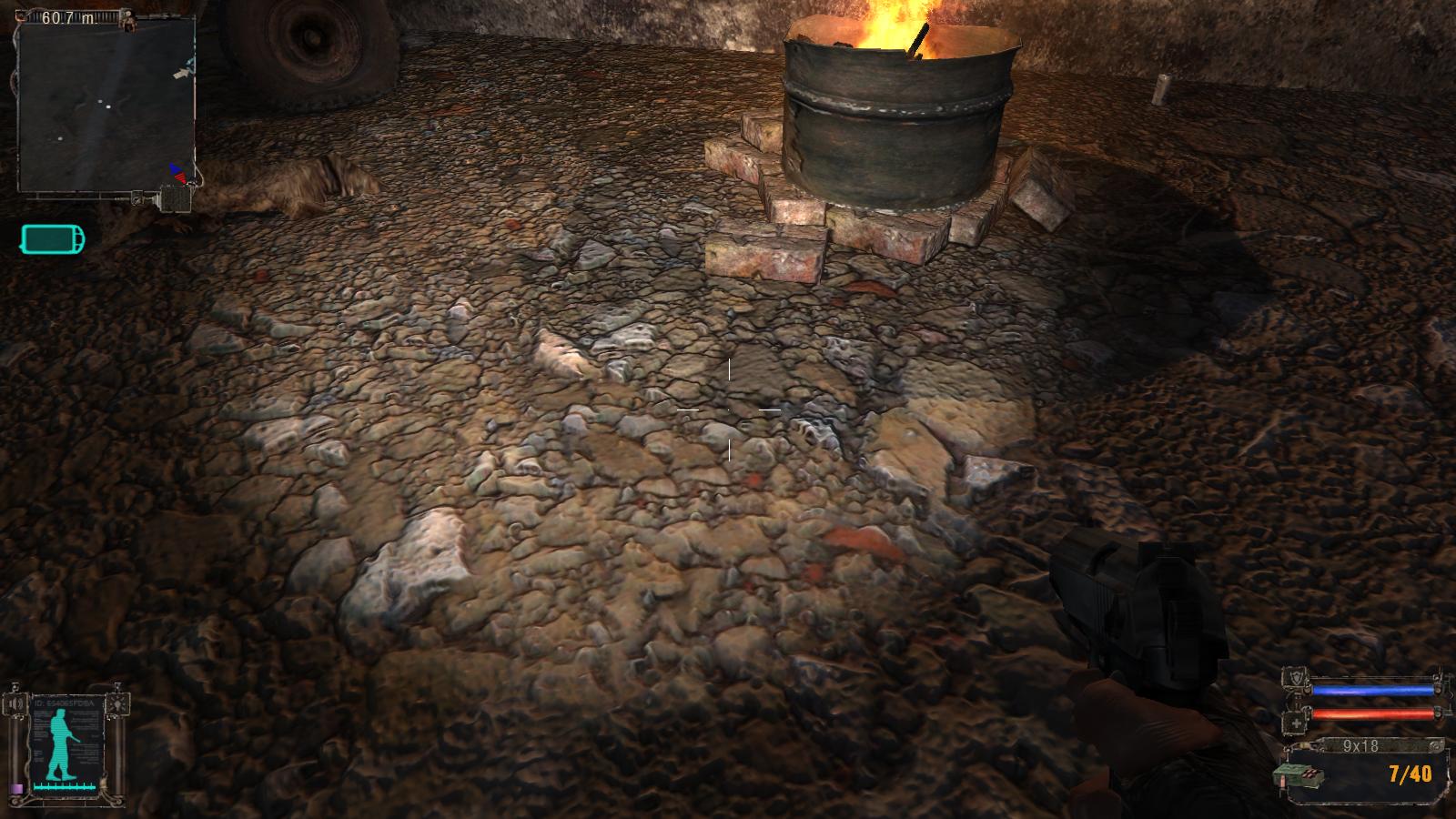
Excellent combination of Parallax and Normal Mapping
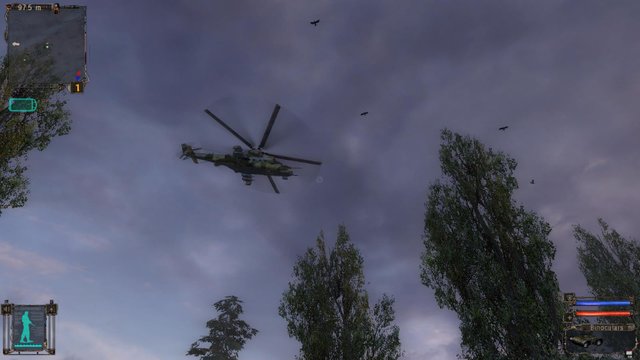
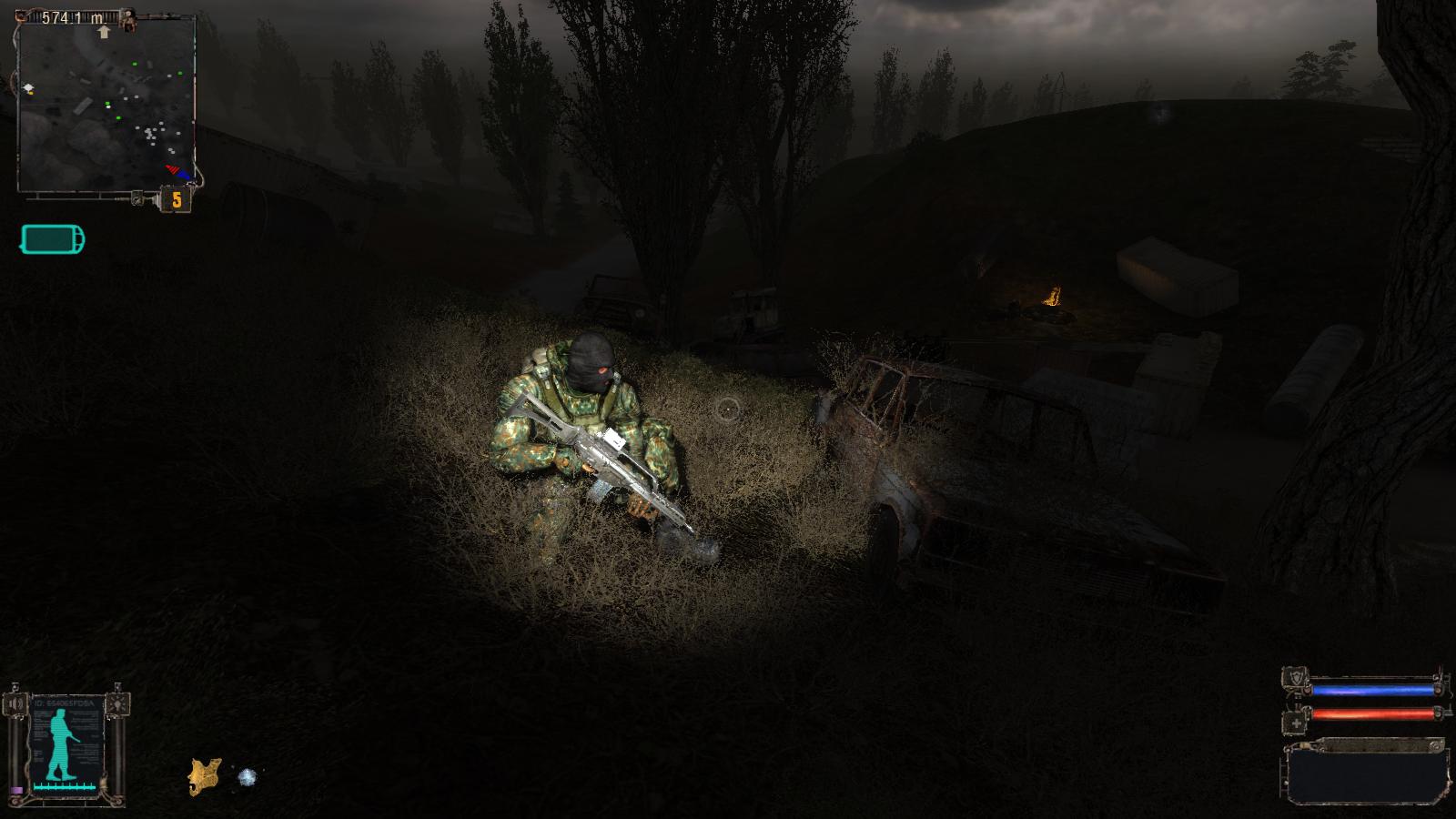
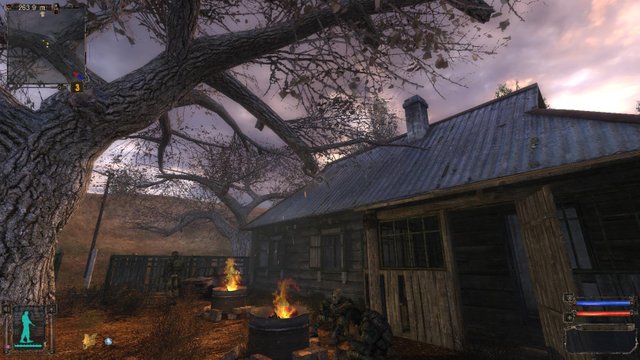
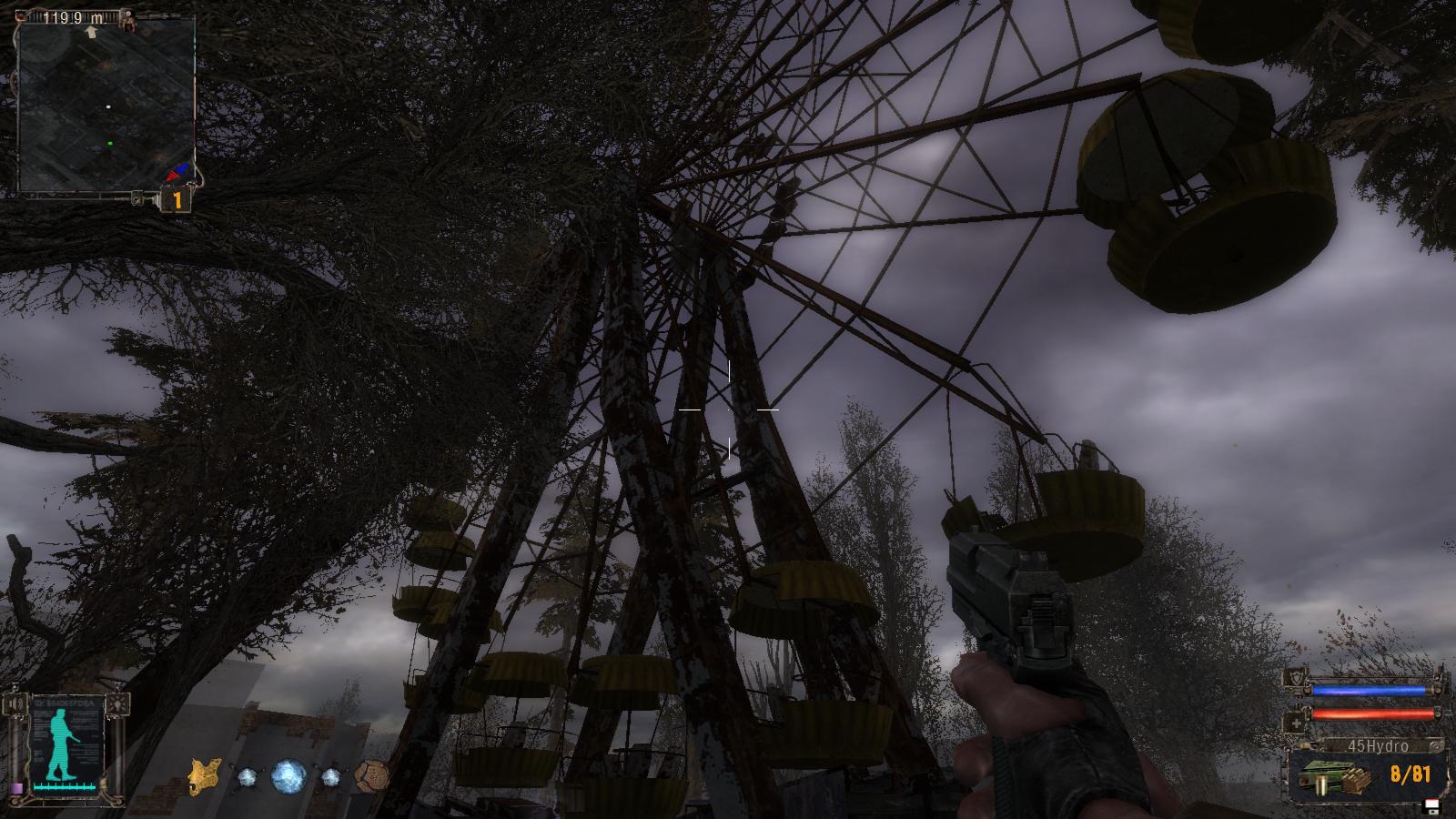
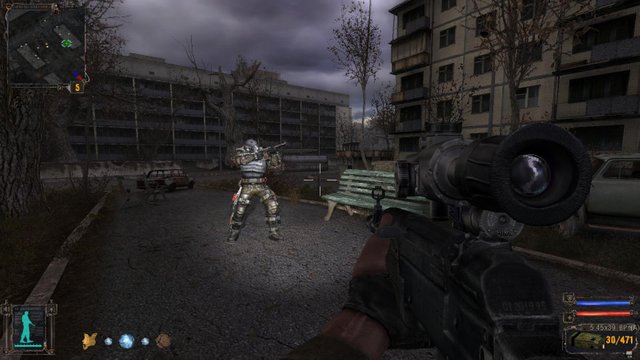
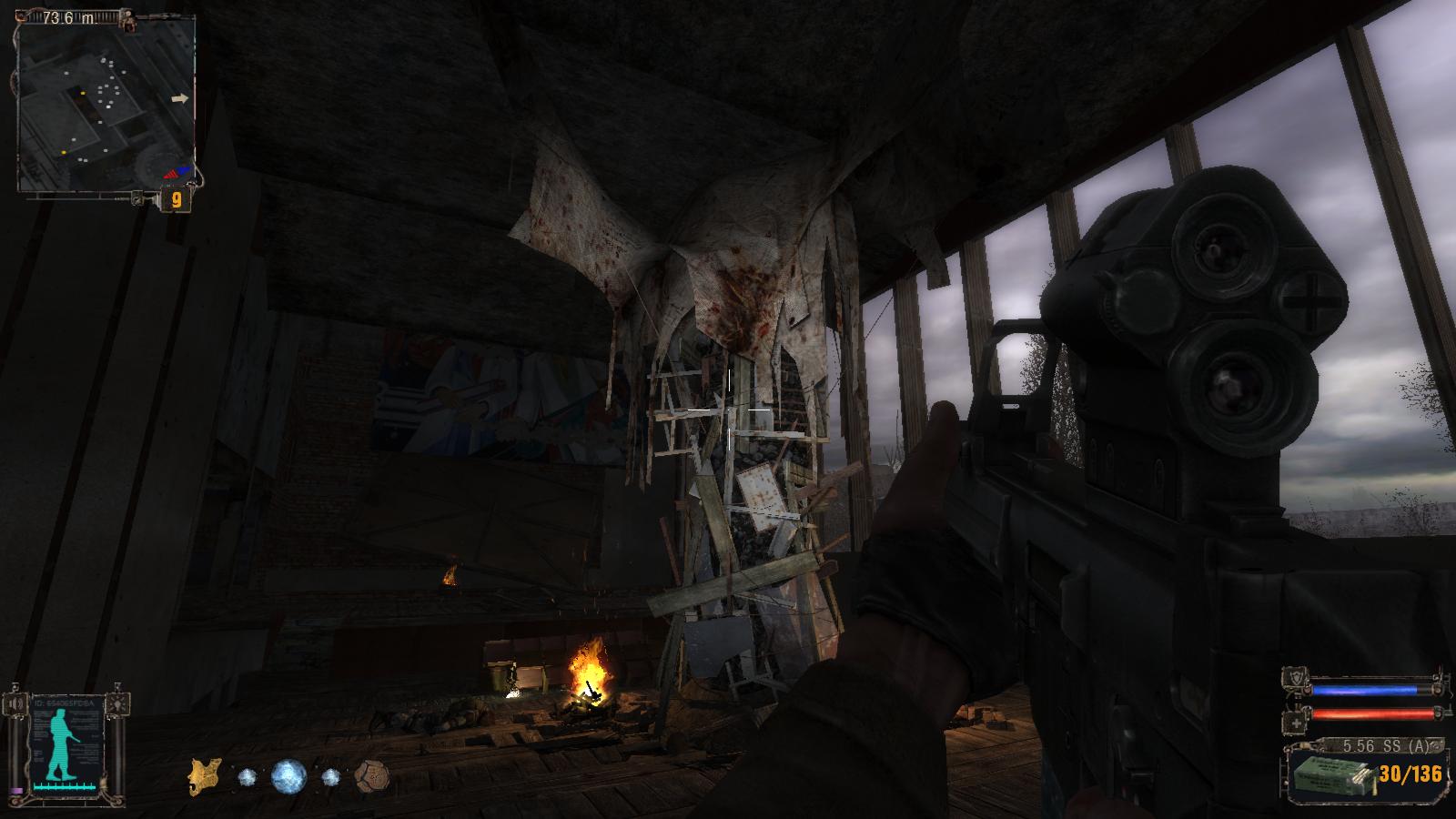

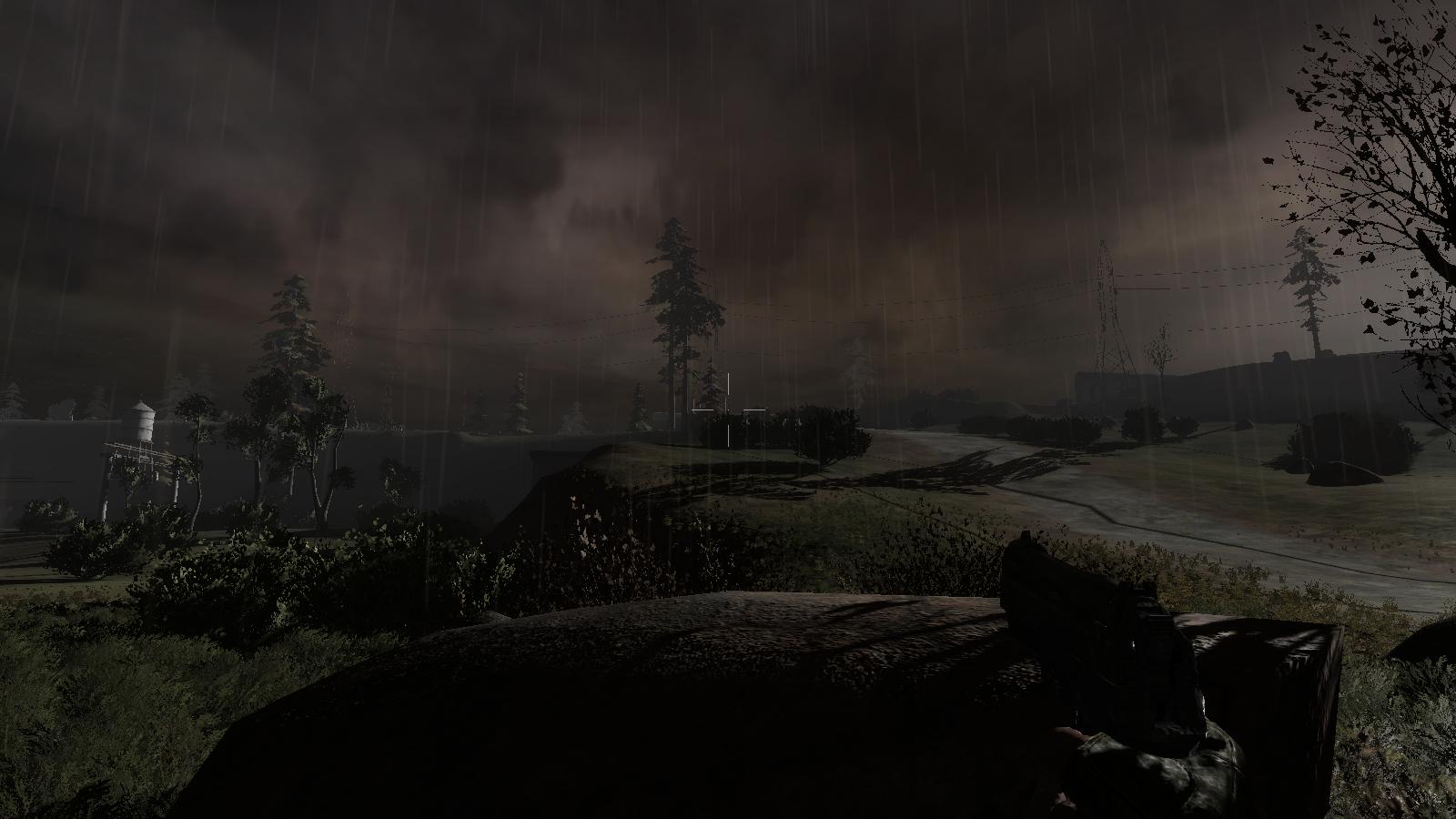
- JG Roos
Congratulations @jgroos! You received a personal award!
Click here to view your Board
Congratulations @jgroos! You received a personal award!
You can view your badges on your Steem Board and compare to others on the Steem Ranking
Vote for @Steemitboard as a witness to get one more award and increased upvotes!